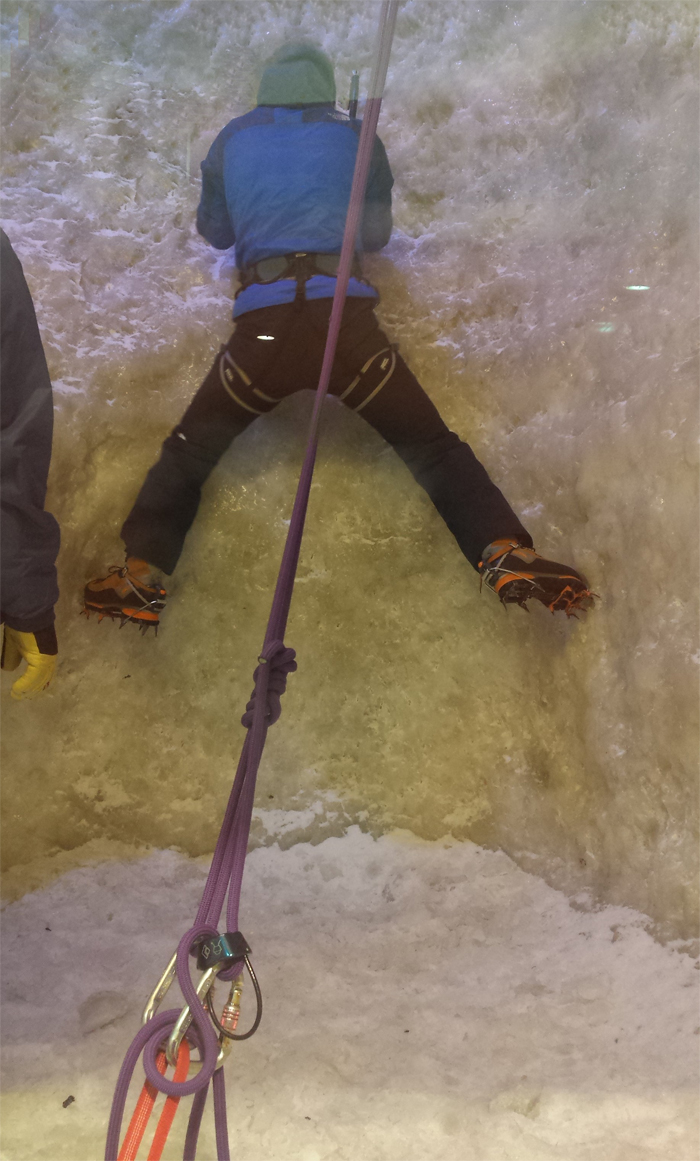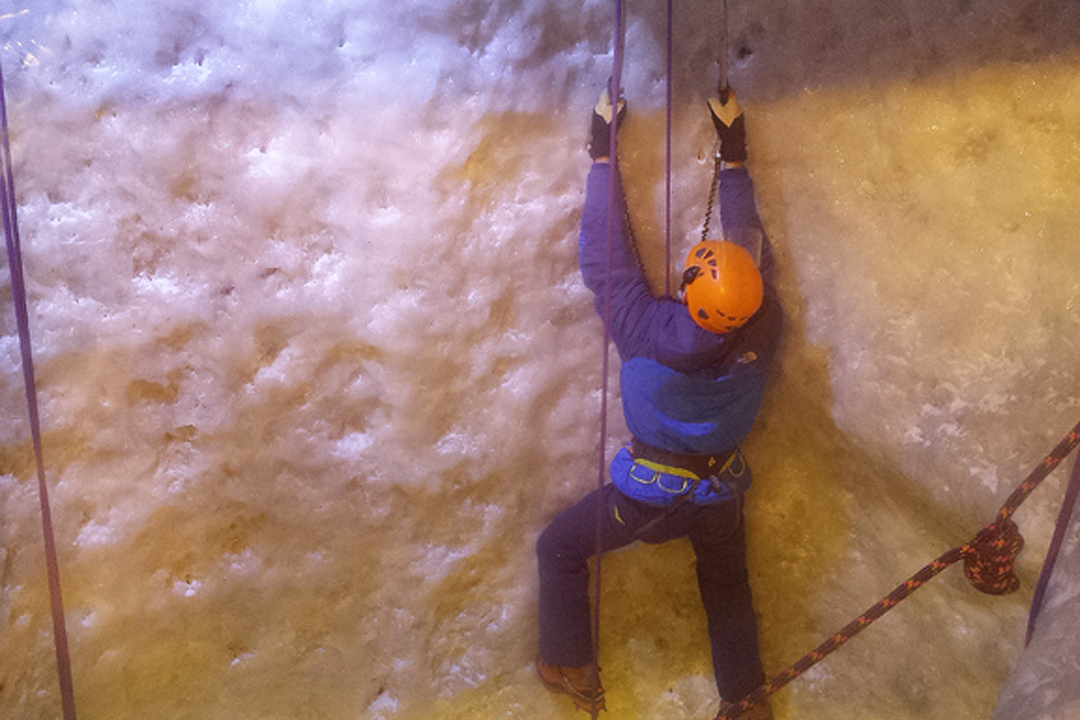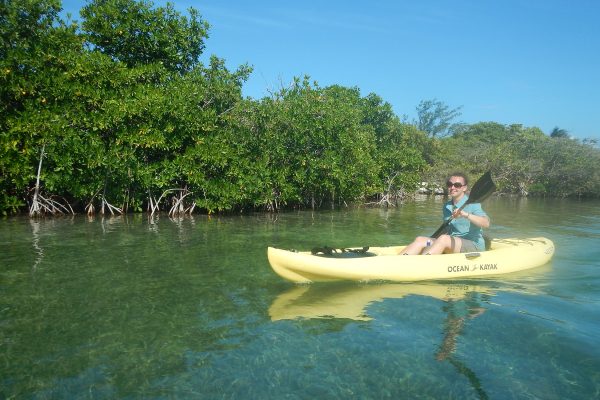Trip duration: 2 hours | Approx cost: £50 | When: All year but great in summer to cool down
Doinit factor: Great introduction to an awesome activity in an awesome city!
“I’m going ice climbing” I tell my friends, to which I receive a rather perplexed look as they ask “Where?” “Covent Garden” I reply. This only raises more questions…. Covent Garden has been home to a vibrant scene of bars and restaurants for a long time so one can be forgiven for not instantly associating the area with ice climbing. Located in Tower House, 10-12 Southampton Street is the Ellis Brigham, no ordinary outdoor clothing store.
As I walk in the Ellis Brigham shop, I must admit I’m not sure I’ve arrived at the right place. It is a nice store, over two floors of outdoor adventure gear one can admire and be tempted to buy, but I’m here to climb up a 26 foot wall of ice. Fortunately, a member of staff is at hand to help. I hesitantly explain I’m here to climb the ice wall. I am walked through the store, past a wall of boots and rails of coloured winter coats before I finally spot the glass viewing area at the back of the stop where I see someone just finishing their session. Here I’m given my gear, trousers, coat, harness, gloves, B3 boots and a clip board with a form with the usual small print explaining that this is a dangerous activity. I tick the boxes, provide an emergency contact, sign and get suited up eager to start my climb. I’m walked back out where I’m given a helmet and my instructor secures my crampons on to my boots. Lastly, before I enter the Vertical Chill, I’m handed my two ice axes.
Entering this massive freezer is a bit like walking into one of those walking freezers you may find in a kitchen. The temperature suddenly drops and I quickly forget that I’m in a shop in Covent Garden. Instead it feels like I’m somewhere up in the arctic about to tackle a great crevasse. My instructor professionally gives me a final safety brief and demonstrates the correct technique needed, he reassures me should I fall, the belay will be there to stop me from plunging to my death. I’ve chosen my route and it’s time to fling my axes into the ice. As I pull myself up, I kick my right leg into the ice, followed by my left. The crampons dig in. This together with keeping my hips as close to the vertical wall, is the technique needed, but it doesn’t come naturally and I find myself trying hard to concentrate on the order which I need to move my limbs to progress my ascent.

Climbing the ice wall is difficult, and it’s not long before I feel my muscles burn. My whole body warms up and I sweat profusely. The bulk of the work is supposed to be done with my legs, I know that, they have much larger muscles then my arms, but I still can’t help not pulling myself up with my arms. The ice axes are there for support, I should be able to let them go and only be supported by my legs but it’s totally counterintuitive. Of all the spikes on my crampons, only the front two are used to hold all my weight.You’re supposed to kick your toes in to the ice then use your ice axes for additional support and steering.
Eventually I start to gain confidence and develop a rhythm. Suddenly my heart skips a few beats as I feel weightless. I see the wall distances itself from me. With my ice axes no longer attached to the wall I fall backwards. It’s a sheer rush of adrenaline as the belay prevents my fall even before I realise what’s happened. I decide to just hang there for a few minutes catching my breath and taking a rest before I tackle the last few feet. I use my ice axes to ring the bell at the top signalling to my instructor I’m ready to abseil down. Looking down it feels a hell of a lot higher than 26 feet. I’m glad I didn’t look down while I was making my way up.Back on the ground I’m given a chance to attempt a second climb, choosing a different route. I now seem to have figured out the technique and balance, but the problem now is that I seem to have used up all my energy on the first climb. Even just holding the axes is extremely strenuous and exhaustion takes its toll. I do get to the top, but only after a few rests. I spend about an hour in the freezer. My body aches, my palms are clenched from the tight grip I held the axes with, and I barley manage a handshake with my instructor as I leave.

The Ellis Brigham Vertical Chill makes for a great workout and a chance to experience something you would normally have to go to Scotland for. This indoor simulation is truly well worth it and provides for a realistic ice climbing experience, conveniently located in London. On my way out I can’t help but marvel at the great gear that’s on sale in the stop but on this occasion I decided that I won’t be able to carry any shopping bags on the way home. For a complete novice like myself, a session costs only £50, well worth it if you ask me. They offer cheaper sessions for those with experience and their own gear. So if you are in town and struggling for something out of the ordinary to do than I would strongly recommend the Indoor Ice climbing.
Saddle Vertical Chill is now closed.



